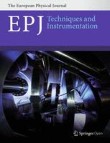Citation Impact 2023
Journal Impact Factor: 1.0
5-year Journal Impact Factor: 1.7
Source Normalized Impact per Paper (SNIP): N/A
SCImago Journal Rank (SJR): N/A
Speed 2023
Submission to first editorial decision (median days): 24
Submission to acceptance (median days): 79
Usage 2023
Downloads: 135,850
Altmetric mentions: 31

 ...
...